(Last Part of the Series)
As residents of Oriental Mindoro flick on light switches and power up their devices, few pause to consider the intricate journey electricity takes from its source to their homes.
Yet understanding this process is crucial, especially as the province grapples with ongoing power challenges that have led to frequent outages and growing frustration among Mindoreños.
The recent power crisis in Mindoro has thrust the Oriental Mindoro Electric Cooperative (ORMECO) into the spotlight, with many residents quick to blame the distributor for their electricity woes.
However, experts argue that the situation is far more complex, involving a web of interconnected players and systems that span from power generation to transmission and finally to distribution.
“It’s important for people to realize that ORMECO is just one piece of a much larger puzzle,” says an energy policy expert at the Department of Energy (DOE) Manila. “To truly understand and address Mindoro’s power challenges, we need to look at the entire electricity supply chain.”
This comprehensive look at Mindoro’s power ecosystem reveals a nuanced picture of the challenges facing the island and the various entities working to keep the lights on.
The Power Generation Landscape
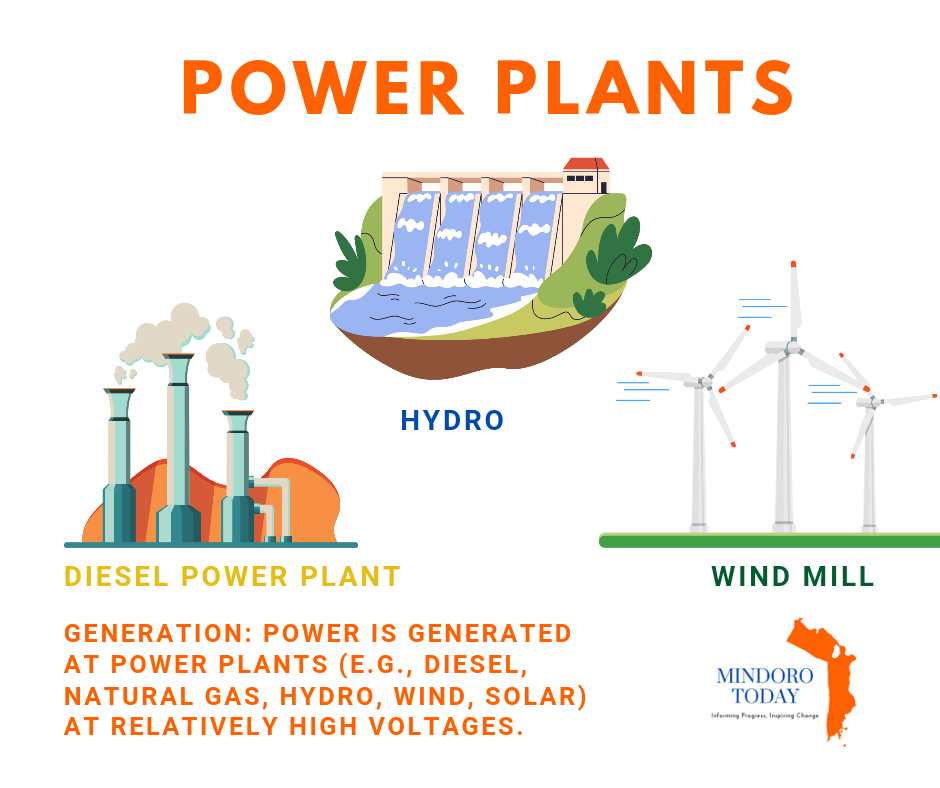
At the heart of Mindoro’s electricity supply are its power plants, responsible for generating the energy that powers homes, businesses, and essential services across the island. These plants come in various forms, each with its own advantages and challenges.
Fossil Fuel Plants: The Backbone of Mindoro’s Power
Historically, Mindoro has relied heavily on diesel and bunker fuel power plants. These facilities, while dependable, come with significant drawbacks. Fossil fuel plants are expensive to operate and contribute to environmental degradation. However, they’ve been crucial in meeting Mindoro’s baseload power needs.
One of the key players in this space has been Global Business Power Corporation (GBP), which has operated several diesel power plants on the island. However, recent years have seen some of these units retiring, contributing to the current power shortage.
Renewable Energy: A Growing Force
In response to environmental concerns and the volatile costs of fossil fuels, Mindoro has been increasingly turning to renewable energy sources. The island boasts significant potential for solar, wind, and hydroelectric power.
Projects like the 7.5-megawatt Sta. Ana Solar Power Plant are just the beginning. There’s enormous untapped potential in both Oriental and Occidental Mindoro.
Despite the promise of renewables, challenges remain. Intermittency issues and the need for substantial upfront investments have slowed the transition. Additionally, integrating these new power sources into the existing grid presents technical challenges.
The Role of Independent Power Producers
Much of Mindoro’s power generation comes from Independent Power Producers (IPPs), private entities that develop and operate power plants. These IPPs play a crucial role in ensuring sufficient power supply, but their relationships with distributors like ORMECO can be complex.
Recent agreements with IPPs like Top Team Power Generation Inc. and DMCI Power Corp. to supply 22.3 MW under an Emergency Power Procurement plan highlight the ongoing efforts to address the power shortage. However, these stopgap measures underscore the need for long-term, sustainable solutions.
TRANSCO: The Critical Link

Once electricity is generated, it must be transported across long distances to reach population centers. This is where the National Transmission Corporation (TransCo) plays a vital role.
TransCo is responsible for operating, maintaining, and developing the power grid in Mindoro. This includes managing high-voltage transmission lines and substations that form the backbone of the island’s electricity network.
“Think of TransCo as managing the highways that electricity travels on,” explains a former TransCo executive. “Without a robust transmission system, even the most efficient power plants would be unable to deliver electricity to consumers.”
In Mindoro, TransCo faces unique challenges. The island’s geography, with its mountainous terrain and scattered communities, makes building and maintaining transmission infrastructure particularly difficult. Moreover, the isolated nature of the grid means there’s no option to draw power from other regions during shortages. In other words, Mindoro is isolated from Luzon power grid. Its off-grid status as an island makes it difficult to draw power from other sources.
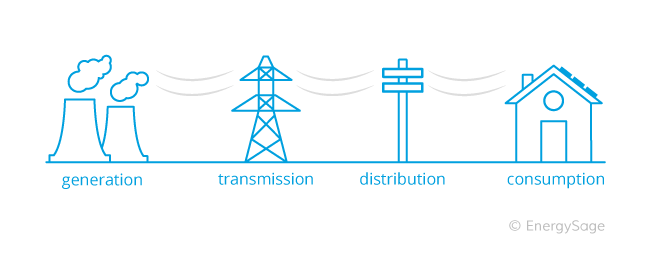
Balancing Act: System Operations
Beyond infrastructure management, TransCo serves as the system operator for Mindoro’s grid. This involves the complex task of balancing power supply and demand in real-time.
TransCo has to ensure that the amount of power being generated matches what’s being consumed at any given moment. Too much or too little can lead to system instability and blackouts.
This balancing act becomes even more challenging as more variable renewable energy sources are integrated into the grid. TransCo must constantly adapt its operations to accommodate these new power sources while maintaining system stability.
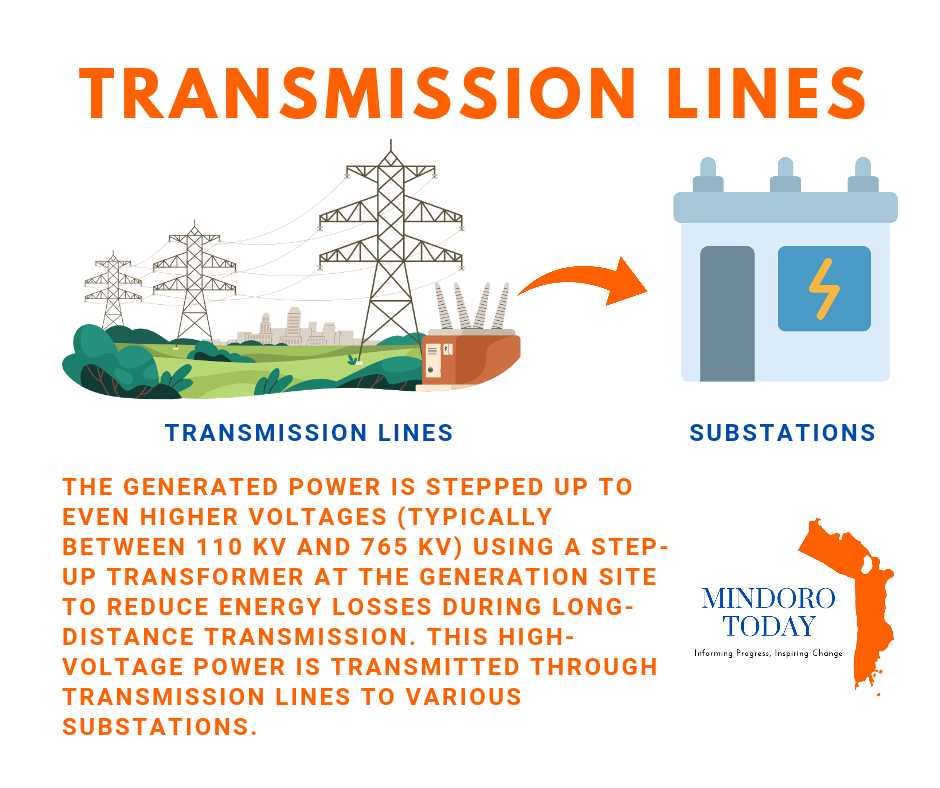
To address Mindoro’s growing power needs and prepare for a future with more renewable energy, TransCo is undertaking several upgrade projects. These include strengthening existing transmission lines, building new substations, and implementing smart grid technologies.
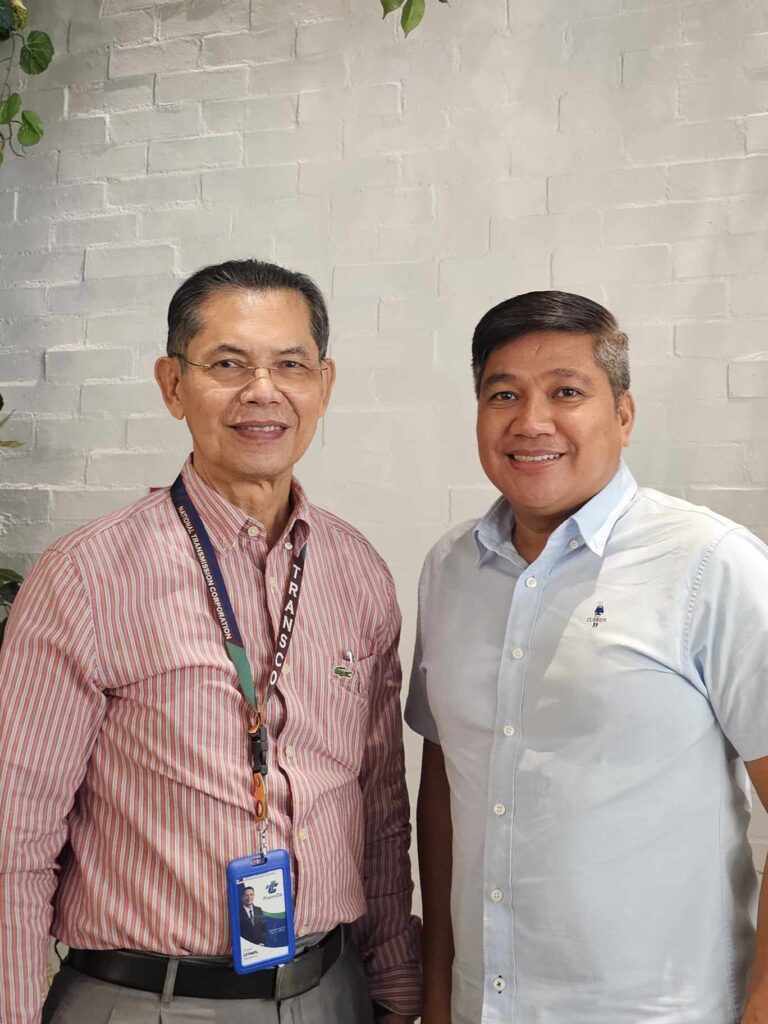
However, these projects require significant time and investment. “Improving transmission infrastructure isn’t something that happens overnight,” says Engineer Fortunato “Atoy” C. Leynes, a former executive at the Manila Electric Company (MERALCO), who has been appointed as the new President and CEO of the state-run National Transmission Corporation (TransCo), in an article. “It’s a long-term process that requires careful planning and substantial resources.”
ORMECO as Distributor: The Final Mile
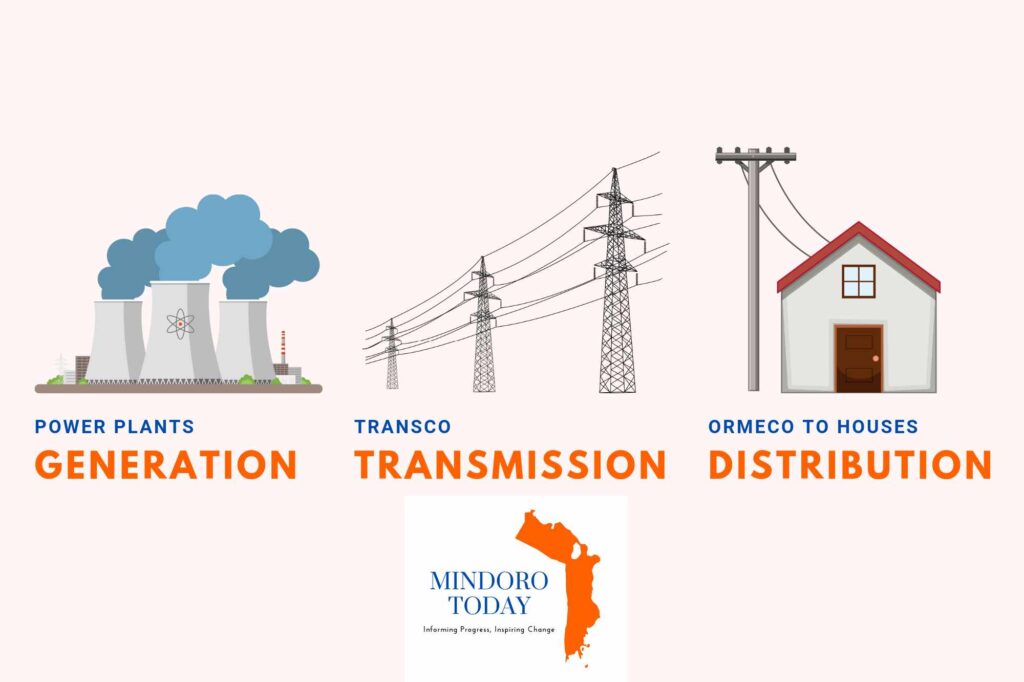
At the end of the electricity supply chain is ORMECO, the electric cooperative responsible for distributing power to end-users across Oriental Mindoro.
ORMECO: More Than Just a Bill Collector
While many residents primarily interact with ORMECO through their monthly electricity bills, the cooperative’s role is far more extensive. ORMECO is responsible for maintaining the local distribution network, connecting new customers, responding to outages, and ensuring the overall reliability of the power supply at the consumer level.
Ormeco is essentially the last link in the chain. Its job is to take the high-voltage electricity from TransCo’s transmission lines and step it down to a level that’s safe for household use.
This involves managing an extensive network of power lines, transformers, and other equipment spread across the province. Given Mindoro’s diverse landscape, from urban centers to remote rural areas, this is no small task.
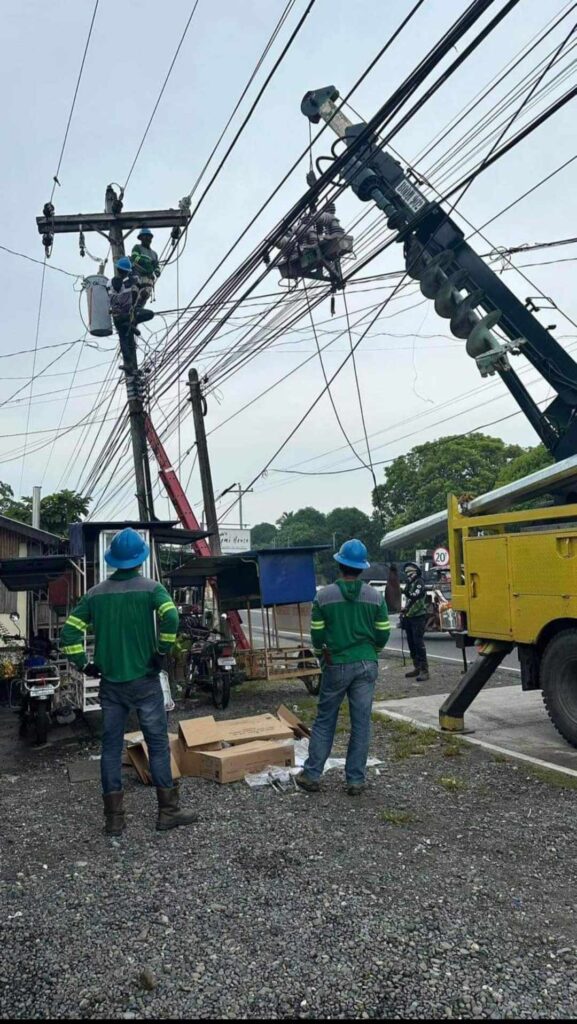
Challenges on the Ground
ORMECO faces numerous challenges in fulfilling its mandate. The cooperative must contend with aging infrastructure, limited financial resources, and the logistical difficulties of serving a widely dispersed population.
“Many of our distribution lines and transformers are decades old,” Ormeco had explained in a media interview. “Replacing and upgrading this infrastructure is a constant battle, especially given our financial constraints.”
The cooperative also grapples with issues like power theft and non-technical losses, which further strain its resources and affect service quality for paying customers.
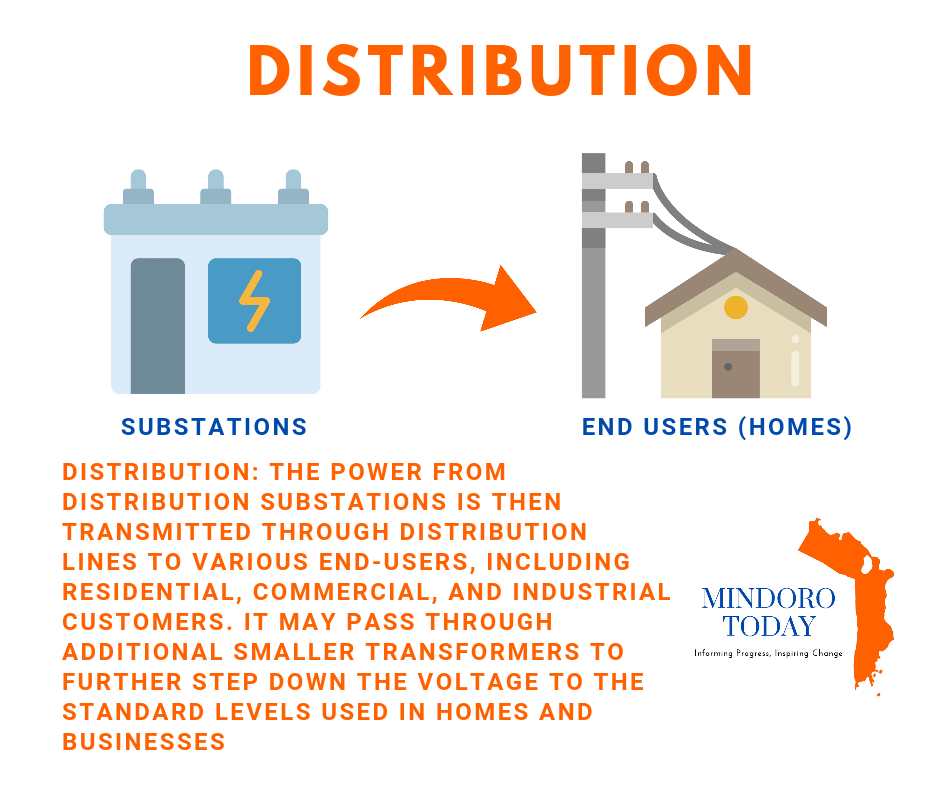
Beyond Distribution: ORMECO’s Expanded Role
In recent years, ORMECO has taken on additional responsibilities beyond mere power distribution. The cooperative plays a crucial role in promoting energy efficiency, integrating renewable energy sources, and extending electrification to underserved areas.
The Interconnected Nature of the Power Crisis
While ORMECO often bears the brunt of public frustration during power outages, the current crisis in Mindoro is the result of challenges across the entire electricity supply chain.
Generation Shortfall
At the root of many recent outages is a simple lack of available power. The retirement of several diesel power plants, coupled with delays in bringing new generation capacity online, has left the island with a significant supply deficit.
Ormeco can only distribute what’s available. When there’s not enough power being generated to meet demand, load shedding becomes unavoidable.
Transmission Bottlenecks
Even when sufficient power is generated, limitations in the transmission system can prevent it from reaching consumers. Outdated or overloaded transmission lines can lead to congestion and reliability issues.
Mindoro does not have 138kV transmission lines such as those operated by NGCP in other parts of the country. The island is stuck with 69kV lines. So even if there is sufficient supply, a 69kV line is not strong enough to transmit electricity from power plants to far-flung towns. So even if you have a river in front of you, you need huge pipes to transport water from its source to residential homes.
“There have been instances where power plants had available capacity, but constraints in the transmission system prevented that electricity from reaching certain areas,” TransCo had once explained.
Distribution Challenges
At the distribution level, ORMECO faces its own set of challenges that can lead to localized outages. These range from equipment failures and maintenance issues to damage from natural disasters like typhoons.
MOVING FORWARD and LOOKING BACK
ORMECO faces significant challenges in providing reliable electricity to Oriental Mindoro, with the province experiencing frequent and prolonged brownouts.
The situation has reached crisis levels, with power outages lasting 4-6 hours or more daily. This power crisis stems from a 19-megawatt supply shortage, equivalent to the power needs of four towns.
The root cause of this shortage appears to be financial issues with one of ORMECO’s power providers, Power One. The National Power Corporation (NAPOCOR) has reportedly failed to provide about P300 million pesos in subsidies to Power One, leaving the company unable to purchase fuel for its power plants. This highlights the vulnerability of the power supply chain in “missionary areas” like Mindoro, where providers rely heavily on government subsidies.
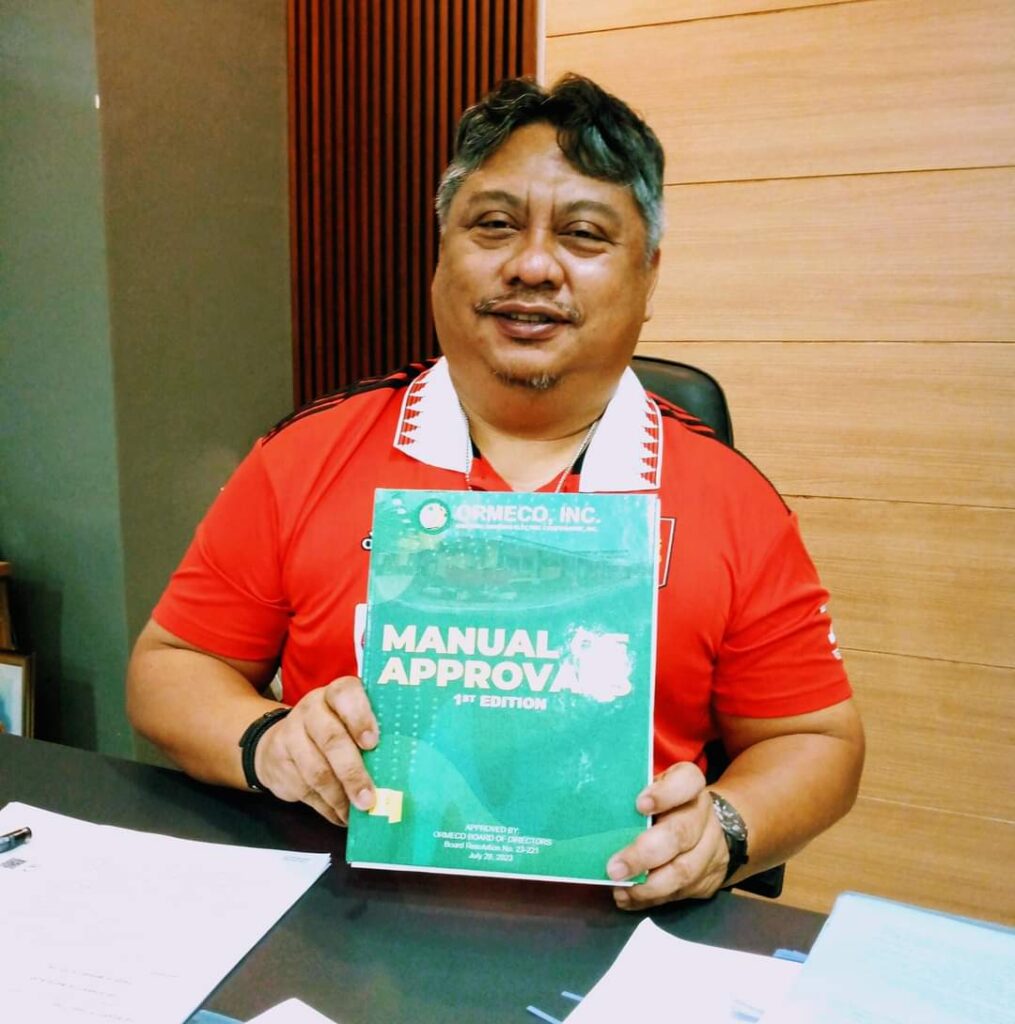
ORMECO’s management, led by General Manager Engr. Humphrey A. Dolor, has taken steps to address these issues:
1. They’ve implemented an Integrated Control & Command Center for 24/7 monitoring of reports and complaints, aiming to improve response times to consumer issues.
2. The cooperative has increased its collection efficiency, particularly from national agencies.
3. They’ve strengthened anti-pilferage campaigns and replaced defective meters, which has helped reduce system losses.
4. ORMECO has partnered with third-party payment facilities to streamline bill payments for consumers.
5. The management claims to have restored ORMECO to “green ec” or “AAA” status, meeting all National Electrification Administration parameters and standards.
However, political leaders, including 1st District Congressman Arnan C. Panaligan, argue that ORMECO’s response to the power crisis has been inadequate.
LGU officials are calling for faster action, particularly in implementing emergency power supply procurement to replace or supplement the shortage from Power One. There’s a lack of clear communication from ORMECO regarding their plans for emergency procurement of a new power supplier.
The situation is further complicated by ORMECO’s upcoming franchise renewal in 2030.
The cooperative is seeking support for this renewal, arguing that maintaining ORMECO’s franchise is crucial to protect the province from profit-driven private corporations that may prioritize profits over public service.
Looking ahead, there are calls for ORMECO to:
1. Expedite the emergency procurement process for additional power suppliers.
2. Improve transparency and communication with consumers about their plans and actions.
3. Consider suppliers with stronger financial capacity who are less dependent on government subsidies.
4. Explore long-term solutions, including the potential use of renewable energy sources.
Additionally, there are moves at the congressional level to investigate NAPOCOR’s failure to pay subsidies to power providers, which could lead to policy changes or interventions at the national level.
The crisis underscores the complex challenges in providing reliable electricity in areas like Oriental Mindoro, where the interplay of local cooperatives, private providers, and government agencies can lead to vulnerabilities in the power supply chain. It also highlights the need for more robust and diversified energy solutions to ensure stable power supply in the island.
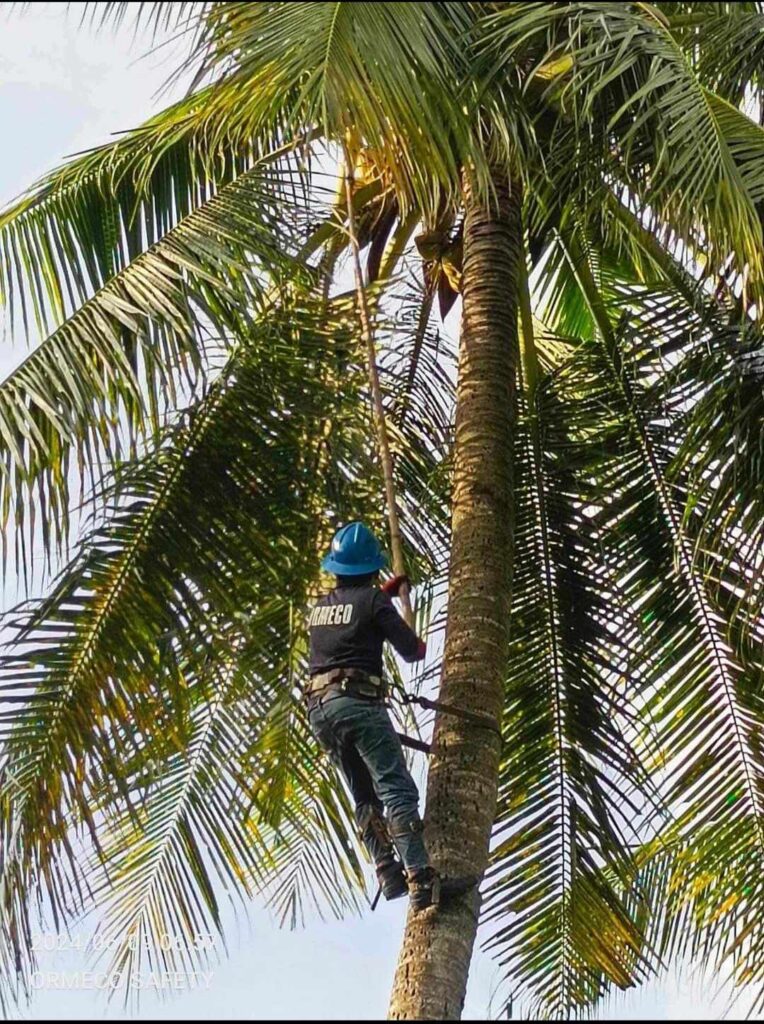
The Path Forward
Addressing Mindoro’s power crisis will require coordinated efforts across all segments of the electricity supply chain.
Expanding Generation Capacity
Plans are underway to bring new power plants online, including both conventional and renewable energy projects. The Department of Energy has identified Mindoro as a priority area for energy investment, with several projects in the pipeline, including the Batangas-Mindoro Interconnection Project.
Strengthening Transmission Infrastructure
TransCo is implementing a series of upgrades to the island’s transmission system. These projects aim to increase capacity, improve reliability, and prepare the grid for greater integration of renewable energy sources.
“We’re not just fixing today’s problems,” Leynes notes. “We’re building a transmission system that can support Mindoro’s power needs for decades to come.”
Modernizing Distribution
For its part, ORMECO is working to modernize its distribution network. This includes upgrading old equipment, implementing smart grid technologies, and improving its response to outages and other issues.
“We’re investing heavily in our infrastructure and our people,” says GM Dolor. “Our goal is to provide more reliable service and empower our consumers with better information and control over their energy use.”
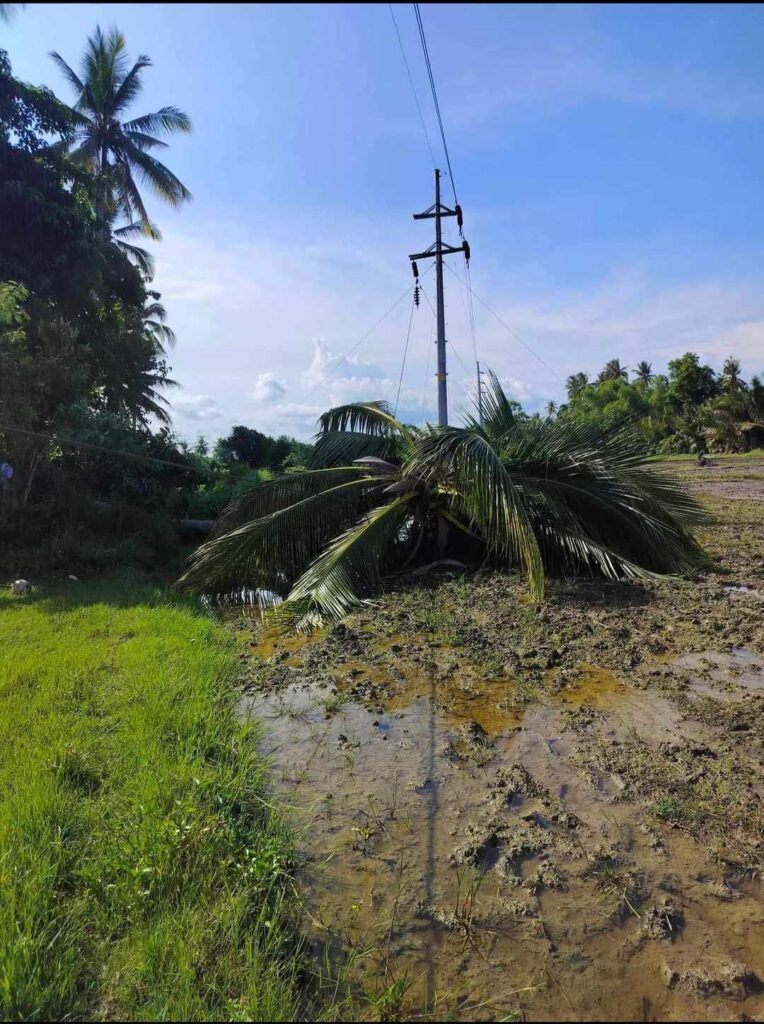
The Role of Policy and Regulation
Experts emphasize that addressing Mindoro’s power challenges will also require supportive policies and regulations. This includes measures to attract investment in power generation, streamline approval processes for new projects, and provide incentives for renewable energy development.
The government needs to create an enabling environment for the power sector to thrive. This includes everything from clear and stable regulations to financial support for critical infrastructure projects.
Community Engagement and Education
As Mindoro works to overcome its power challenges, experts stress the importance of community engagement and education.
It’s crucial that residents understand the complexities of the power system,” says the DOE. “This can foster more productive dialogue and realistic expectations as we work towards solutions.”
ORMECO, for its part, is ramping up its community outreach efforts. Ormeco must be committed to transparency and open communication. Ormeco should make its member-consumers partners in this journey towards a more reliable and sustainable power supply.
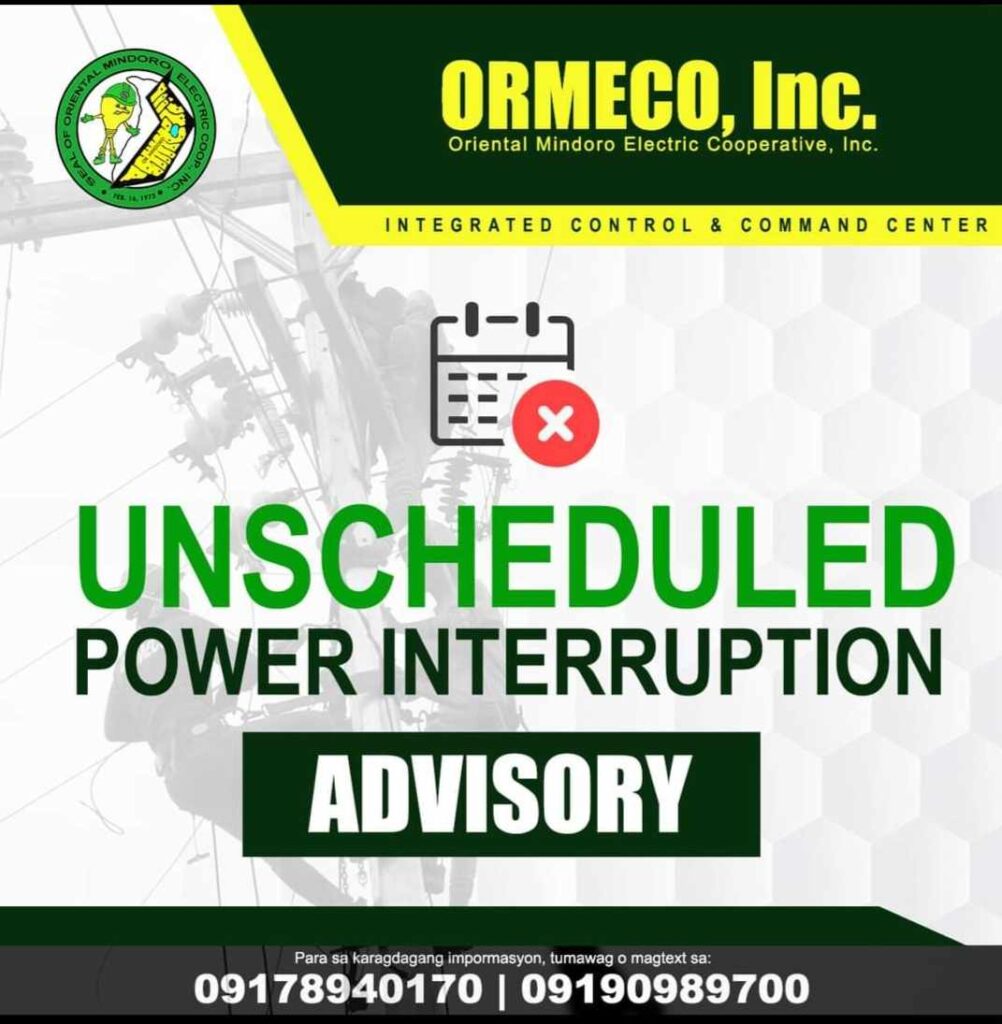
Shared Responsibility
As Mindoro grapples with its power challenges, it’s clear that no single entity can solve the problem alone. From power plant operators to TransCo, from ORMECO to end-users, each part of the electricity ecosystem has a role to play.
“Reliable power isn’t just ORMECO’s responsibility, or TransCo’s, or the generation companies’,” concludes an energy expert at DOE. “It’s a shared responsibility that requires collaboration, investment, and patience from all stakeholders.”
For the residents of Mindoro, understanding this complex journey of electricity – from generation to transmission to distribution – is the first step towards becoming active participants in shaping the island’s energy future.
As the province works towards more reliable and sustainable power, this informed engagement will be crucial in navigating the challenges and opportunities that lie ahead.


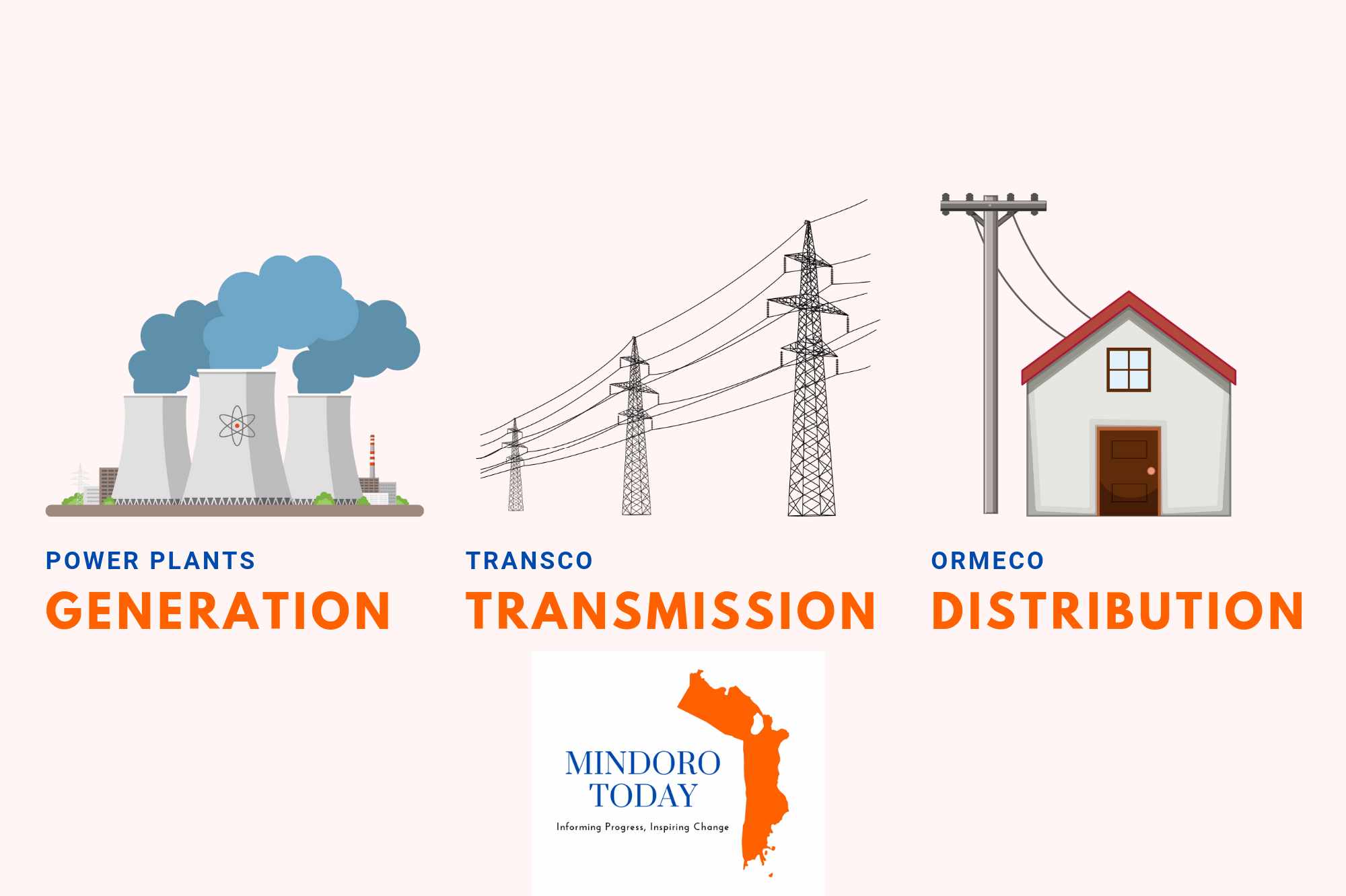






Write Your Comment